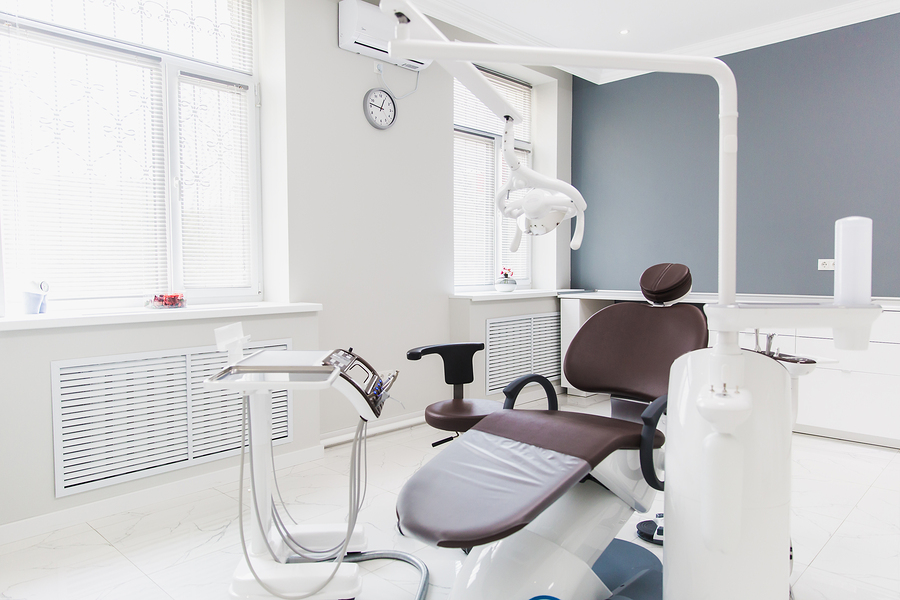5 Ways That a Dental Office Redesign Can Negatively Impact Your Dental Practice
Posted by HJT Design

A much-anticipated renovation is usually a good thing. New interior designs, updated furniture, and the latest tools and gadgets can transform the otherwise mundane and ordinary things around us into something really amazing. The same is true for dental practices.
A planned dental office redesign can be the perfect solution to improve employee morale, attract new patients and expand for future growth.
Even though there are countless reasons why a dental office redesign should be on your to-do list this year, some redesign elements could actually cause more harm than good for your practice. It’s best to avoid these design flaws so your dental practice doesn’t negatively suffer post-renovation.
5 Potentially Negative Effects of a Dental Office Renovation
1. Your modern redesign style is aesthetically unappealing.
Know your patients, your neighborhood, and the past “feel” of your office. When these redesigns take place, in an effort to look modern, sleek and clean, many dental office make-overs can end up losing that sense of comfort, familiarity, and warmth that is attractive to patients. In turn, they look too sterile, too cold, and too impersonal. As a result, patients often find themselves switching dentists to a practice that feels more personal and welcoming. Be sure that your design team incorporates elements of warmth and personal touches to help your established patients still feel welcome and familiar with the changes that they’re seeing at your office.
2. Your high-end waiting room furniture can chase people away.
Yes, you read that correctly. The wrong type of furniture can actually deter people from coming back to your office. Comfy sofas are not practical and will usually result in fewer people finding seats in your waiting room since people don’t usually want to get too close to other people’s personal space. Waiting room chairs that feature deep seats and no arm rests, or overly padded cushions and arm rests, can be difficult for seniors and disabled patients to get up from. If the waiting process is difficult and uncomfortable for your patients, you may find a whole demographic staying away from your office entirely. To avoid this, choose individual, comfortable chairs that have straight backs and wooden or metal arm rests. There are many contemporary styles available that will still meet the ergonomic needs of your patients.
3. Your dental office redesign attracts too many people.
You might not think this is a bad thing, but it actually can be. Fresh, new renovations often attract many curious people wanting to check out all of the exciting changes they’ve heard about. This influx of new patients, if not accounted for in the design process, can easily push out established patients who no longer feel that they are receiving the time and attention they once did. Proper planning to allow for exponential growth can minimize the chance of this happening. If you’re renovating for growth, plan space for additional dental treatment and recovery rooms. Expand your hours of operation so that your patients have more opportunities to schedule an appointment with shorter wait times. Be sure that your office redesign does not unintentionally communicate “Out with the old, in with the new” to your patients.
4. Your staff could become easily distracted after a dental redesign.
New desk chairs can take time to adjust properly. High-tech dental equipment for new procedures can require time to master with ease and may require additional focalized attention. The awe and amazement that often comes with any renovation or office make-over can be a lot for your staff to take it. Be sure to give your dental team and support staff adequate time to adjust to the new look, any new procedures, updated equipment, and the changing work environment. This can help minimize workplace confusion, unprofessionalism, or unwanted distractions while serving your patients.
5. Your “dream” redesign could force you to outspend your budget.
This can be a major problem, because once a project is started, it can be very tempting to go with the latest and greatest dental tools, top-of-the-line flooring, or even an extra build-out in an attempt to “go all out”. This could have catastrophic results if your post-renovation cash flow cannot support the total cost of your redesign. This can be avoided by determining a strict budget for your project and sitting down with a professional dental design consultant to make sure that you stay on track from start to finish.
The decision to invest in the growth potential of your dental practice with a much-needed office redesign is an important one to make. The benefits of a office redesign can bring many positive changes to any dental practice, but it’s important to strategically plan to avoid any possible negative outcomes afterward.
HJT Dental Design Consultants can help. Our industry experts understand how to navigate through budgets, design needs vs. wants, and unexpected circumstances during the redesign process and can help you create the perfect renovation design to best set your office up for success. Check out our website today at HJT Design Consultants to calculate your office construction budget for free, or to set up a consultation.